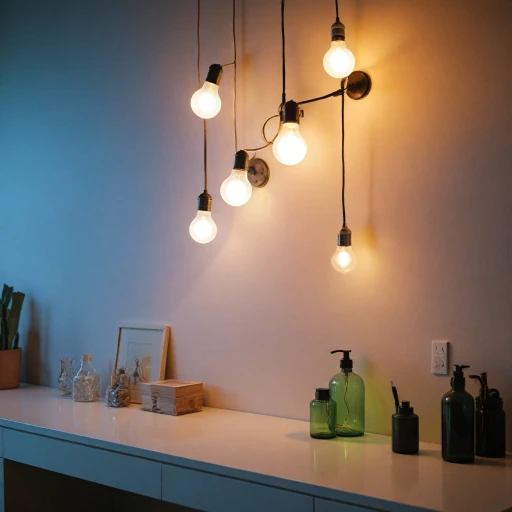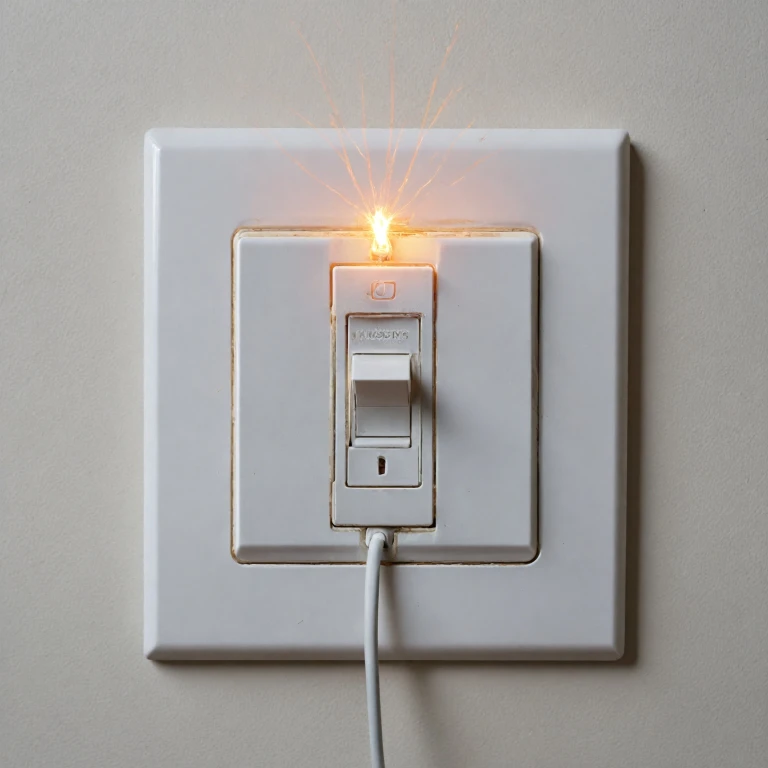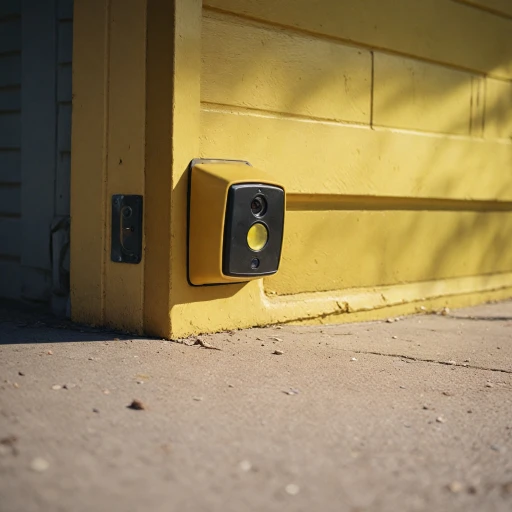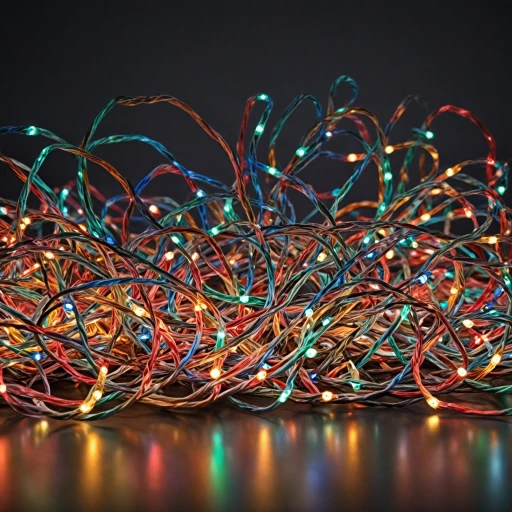
Understanding the Basics of Light Switch Shocks
Why Do Light Switches Shock Us?
Experiencing a shock when touching a light switch can be an unsettling experience. It's essential to understand that these shocks can stem from various sources, including static electricity and electrical faults. Static electricity is a common culprit, especially in dry environments where it builds up on our bodies and discharges when we touch a conductive surface, like a metal switch.
However, if the shock feels more intense or occurs frequently, it might be due to an issue within the electrical system. Faulty wiring or a malfunctioning switch box can lead to electrical shocks. In such cases, it's crucial to address the problem promptly to ensure safety. Consulting an electrician can help identify and rectify any faulty wiring or other issues within the circuit.
Common Causes of Electrical Shocks
- Static Electricity: Often harmless, this type of shock occurs when static builds up on your body and discharges upon contact with a conductive surface.
- Faulty Wiring: Poor or damaged wiring can lead to more severe shocks, indicating a need for professional inspection.
- Moisture: Water or moisture in the switch box can cause electrical shocks, highlighting the importance of keeping these areas dry.
- Improper Grounding: Without proper grounding, electrical systems can become hazardous, leading to potential shocks.
Understanding these causes can help in troubleshooting and preventing future incidents. For those considering smart lighting as an alternative, it's worth exploring how these systems might offer enhanced safety features. In the next sections, we'll delve into how smart lighting can be a safer option and the importance of proper installation and maintenance.
For more insights on managing light switches, you might find this guide on voice-controlled light switches helpful.
Smart Lighting: A Safer Alternative?
When considering smart lighting as a potential solution to light switch shocks, a few key aspects emerge that make them a potentially safer alternative. Smart lights, which integrate advanced technologies and minimize direct electrical contact, offer promising innovations in lighting safety.
Minimizing Direct Electrical Contact
The design of smart light systems often reduces the need for direct contact with traditional light switch mechanisms. Traditional switches may cause static or electric shocks due to a combination of faulty wiring, moisture accumulation, or improper grounding with earth wiring. By minimizing physical contact, smart lighting reduces the risk of electric shock. Smart light systems can be operated through voice commands, motion sensors, or mobile apps, eliminating the need to physically touch a light switch.
Enhancing Electrical System Safety
Smart lights can be safer because they allow for more precise control over the electrical system. They often come equipped with protective features that help prevent electrical shocks. By connecting to a centralized network, smart lighting systems facilitate better monitoring of energy use and can alert you to potential issues with faulty wiring or devices drawing too much electricity.
Less Prone to Static Shock
Traditional light switches, especially metal ones, can become conduits for static shocks due to static electricity buildup. Static shock issues can be reduced in smart lighting systems through enhanced insulation and reduced reliance on physical switch contact, further ensuring that you, the end-user, have a safer interaction with your lighting system.
For additional insights into using modern technology to manage your lighting seamlessly, you can explore the topic of effortless illumination with voice controls, which illustrates the hands-free, shock-reducing advantages of smart lights.
While smart lighting systems offer certain safety advantages, it’s crucial to have them installed by qualified electricians to prevent issues like switch shocks and ensure reliable wiring. Regular maintenance checks can also help uphold the integrity of these systems over time.
The Role of Proper Installation and Maintenance
Preventing Shocks With Proper Installation and Maintenance
Ensuring that your smart lighting systems are properly installed and maintained is crucial for minimizing the risk of shocks. Here's how you can ensure your setup is both safe and efficient:- Professional Installation: Hiring a qualified electrician for installation is essential. They will ensure all connections are secure and compliant with local electrical codes. Faulty installation, such as incorrect wiring or loose connections, can lead to shocking experiences.
- Earth Connections: Modern wiring systems come with a green and yellow earth wire that helps prevent electrical shocks by keeping the circuit grounded. Ensure your switch box maintains proper earth connections to avoid any potential hazards.
- Regular Maintenance: Conduct routine check-ups of your light switches and light fixtures. Look out for signs of wear and tear, moisture, or faulty wiring. Regular maintenance can prevent the build-up of static electricity, reducing the chance of receiving a static shock.
- Component Quality: Invest in high-quality smart light systems and components. This includes light switches, switches outlets, and the switch box itself. Quality materials are less likely to suffer from faults that lead to electric shocks.
- Stay Updated: As with all technology, staying informed about smart lighting can help you make safer choices. Keep an eye on enhancing home comfort with smart fan controls to learn about the latest advancements in smart light safety features.
Troubleshooting Common Smart Light Issues
Identifying and Resolving Malfunctions
To ensure your smart lighting system operates safely and efficiently, it's crucial to address any malfunctions promptly. One common issue that may arise in smart lighting systems is the presence of faulty wiring or components. Faulty wiring can cause switch shocks, static electricity build-up, and even electrical shocks when operating the light switch. Additionally, these issues might escalate over time, leading to severe electrical safety hazards. When faced with a malfunctioning smart light system, checking the smart switch box for any visible signs of wear or damage is a good starting point. Any exposed wires or loose connections should be meticulously inspected, as these can often result in electrical shocks or shorts within the circuit. Properly securing these connections can help mitigate the risk. Moreover, the installation of smart lighting often requires grounding through an earth wire, typically using a green-yellow wire. Ensuring this is done correctly can play a vital role in preventing electrical shocks or static build-up. If you encounter persistent issues despite routine checks, it may be wise to consult an electrician or a staff member with expertise in electrical systems. This professional insight can be incredibly valuable for troubleshooting electrical shocks or switch shocks associated with faulty connections or components. The role of moisture cannot be underestimated, as it can exacerbate shock risks. Installing weather-resistant switch covers or placing your smart light setups away from areas prone to moisture can enhance safety. Another potential solution could involve checking online electrical forums, where many users share experienced replies on dealing with specific malfunctions, to find dual approaches to resolving any malfunctions. Keep in mind that while many fixes may appear straightforward, dealing with electrical systems can be dangerous and calls for professional knowledge, especially when fault or shock issues persist. A certified electrician will ensure that your smart lighting operates without posing any unnecessary risk of electric shock, offering peace of mind that your system is functioning optimally.Smart Light Features That Enhance Safety
Innovative Smart Light Features for Enhanced Safety
Modern advancements in smart lighting technology are not just about convenience and aesthetics—they also play a crucial role in boosting home safety. These enhancements minimize risks and increase protection against common issues like electric shock and switch shock. Here's a closer look at some of these features:
- Automatic Detection: Smart lights often come equipped with sensors that detect faulty wiring or electrical inefficiencies before they become hazardous. By alerting users via apps or devices, potential issues can be addressed by an electrician promptly, reducing the risk of electrical shocks.
- Moisture Control: Certain smart lighting systems include moisture sensors that help prevent electrical shock due to damp conditions. If the system detects excess moisture near electrical components, it will trigger an alert to prevent using light switches in unsafe conditions.
- Energy Monitoring: These lights can monitor energy usage, which can indirectly identify potential issues with your home's electrical system. A sudden spike in energy consumption may indicate a faulty circuit or wiring problem, prompting users to seek professional advice.
- Integrated Earth Systems: Proper grounding, marked by standard green and yellow wire colors, is vital in preventing electrical shock. Smart systems ensure switches, outlets, and circuits align with electrical protocols by incorporating earth systems to minimize hazards.
- App Connectivity: With their built-in connectivity, smart lights allow users to address concerns immediately via their apps. This way, any alerts about potential shocks or electrical issues can be dealt with quickly by a support staff member or a qualified electrician.
Smart lighting is revolutionizing safety measures with thorough preventative features that reduce the risk of shock light incidents. By embracing these technologies, homeowners can enjoy peace of mind, knowing their electrical systems are monitored and maintained to a high standard.
Future Trends in Smart Lighting and Safety
Innovations in Smart Lighting Safety
Navigating the future of smart lighting, it's crucial to understand the innovative trends evolving in the domain, particularly concerning safety features. As smart light technology progresses, several advancements are geared towards minimizing risks associated with electric shocks and faulty wiring.- Enhanced Circuit Protection: Modern smart lights are increasingly designed with advanced circuit protection to guard against faults and surges. This development is instrumental in preventing switch shocks that stem from compromised electrical systems.
- Increased Integration with Home Automation: Future smart lighting systems are expected to offer more seamless integration with home automation. This connectivity not only boosts convenience but also allows users to monitor and adjust their lighting system through a central hub, facilitating early detection of faulty wiring or static electricity issues.
- Improved Moisture Resistance: Given that moisture can be a significant contributor to electrical shocks, manufacturers are focusing on enhancing moisture-resistant designs. This innovation reduces the risk of electrical shocks in environments where moisture is prevalent.
- Smart Alerts for Switch Shocks: Emerging models are equipped with smart alerts to notify homeowners of unusual static shocks or any discrepancies within the switches or circuit, allowing for prompt responses to potential hazards.









